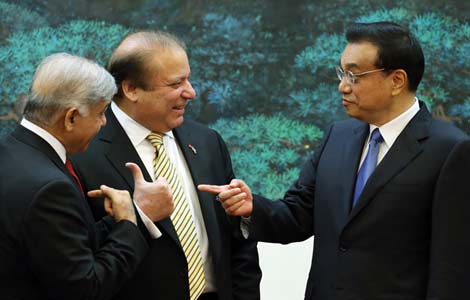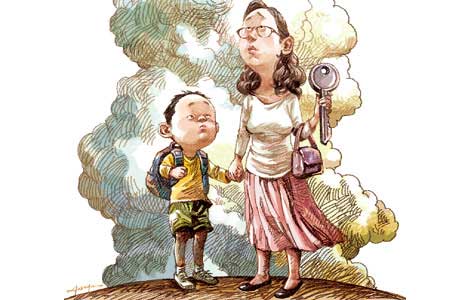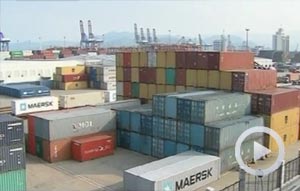Guideline issued to stabilize capital flows
Updated: 2013-07-06 02:16
By CHEN JIA and ZHENG YANGPENG (China Daily)
|
||||||||
A specific guideline to stabilize capital flows was issued by the central government on Friday. It particularly encourages more private funds to take part in reform of financial institutions at various levels.
The State Council, or the nation's cabinet, said China's financial system and economy are "stable and sound", with risks under "good control".
To guarantee the efficient use of credit and to support rebalancing of the economy, the State Council guideline contains 10 key points:
• To continue to pursue a prudent monetary policy to keep the money and credit supply at a reasonable level, and to gradually let the market decide interest rates.
• To speed up reform in key industries and areas by imposing a strict curb on credit and direct financing for unapproved projects in industries suffering from overcapacity.
• To support small businesses by mobilizing financial resources in different sectors of society, and accelerating securitization of credit assets.
• To strengthen credit support to farming and rural development by allowing different reserve requirement ratios in village and township banks.
• To promote consumer financial services to boost domestic consumption.
• To encourage overseas development of Chinese enterprises, as well as expand the pilot program for individual investors injecting money into the foreign capital market, or QDII2. There will be innovative ways to invest foreign exchange reserves through commercial bank loans to bring about corporate overseas expansion.
• To accelerate building a multi-level capital market and innovation for more special funds for mergers and acquisition projects.
• To enhance the effectiveness of insurance in transforming the economic growth pattern.
• To open more areas for private investment in the financial sector, especially private capital that will be allowed to set up banks and other financial institutions.
• To strictly control the financial risk.

 China-Russia navy drill furthers ties
China-Russia navy drill furthers ties
 Famed monkey takes a new direction in New York
Famed monkey takes a new direction in New York
 China, Pakistan ink transport pact
China, Pakistan ink transport pact
 Passenger car sector outlook brightens
Passenger car sector outlook brightens
 Multinationals face increased scrutiny
Multinationals face increased scrutiny
 Kobe Bryant reportedly has highest net worth in NBA
Kobe Bryant reportedly has highest net worth in NBA
 Chinese fleet arrives in Vladivostok for drills
Chinese fleet arrives in Vladivostok for drills
 Joey Chestnut wins 7th contest with 69 dogs
Joey Chestnut wins 7th contest with 69 dogs
Most Viewed
Editor's Picks

|

|

|

|

|

|
Today's Top News
Nicaragua willing to grant Snowden asylum
High hopes for China-US talks
Li: 'India is an important neighbor'
US missile interceptor test fails
Multinationals face increased scrutiny
China, Pakistan ink transport pact
Guideline to stabilize capital flows
South Sinai, Suez in emergency
US Weekly

|

|






